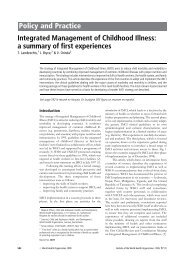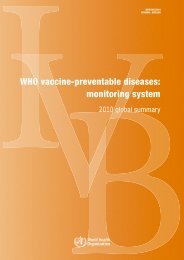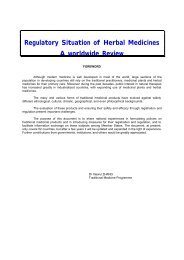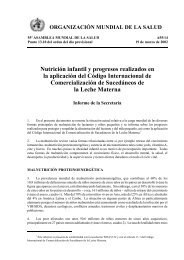IPDE - Extranet Systems - World Health Organization
IPDE - Extranet Systems - World Health Organization
IPDE - Extranet Systems - World Health Organization
You also want an ePaper? Increase the reach of your titles
YUMPU automatically turns print PDFs into web optimized ePapers that Google loves.
Epidemiology of DSM-Ill personality<br />
disorders in the community and in<br />
clinical populations<br />
lames H. Reich and Giovanni de Girolamo<br />
Although the early Greek philosophers wondered about the influence of<br />
personality on health, it is only recently that the epidemiology of personality<br />
disorders (PDs) has begun to be scientifically investigated. This is<br />
because we have now developed a number of standardized instruments<br />
to assess personality and PD in an empirical fashion. The first comprehensive<br />
epidemiologic reviews in the English language have only<br />
been published since the mid-1980~.'~ The need for the epidemiological<br />
investigation of PD seems justified for several reasons: firstly, as seen<br />
in the most recent epidemiological surveys, PDs are frequent and<br />
have been found in different countries and sociocultural settings:<br />
secondly, PDs can seriously impair the life of the affected individual<br />
and can be highly disruptive to societies, communities. and families;<br />
thirdly, personality status is often a major predictive variable in<br />
determining the outcome of psychiatric disorders and the response to<br />
~eatment.~.~<br />
In this chapter we review the main epidemiological literature on PDs<br />
up to the end of 1993, focusing mainly on studies employing DSM-ILI or<br />
DSM-111-related measures of personality. Firstly community prevalence<br />
studies of PD will be reviewed. We then look at the prevalence of individual<br />
PDs in the community. Finally, we consider PDs in psychiatric<br />
populations. Many of the DSM-111 categories of PD have counterparts in<br />
the ICD-I0 classification; however, when this chapter was being written,<br />
there were no studies yet which directly employed ICD-10 criteria. For<br />
those interested in the literature prior to DSM-I11 and ICD-10.<br />
Nengebauer et al.' reviewed 20 epidemiological psychiatric studies carried<br />
out in Europe and North America since 1950. They found an average<br />
prevalence rate for PD of 7%. However, their estimate included<br />
alcoholism and drug abuse among the PDs. A few years later Pemy and<br />
Vaillant8 suggested that between 5 and 15% of the adult population can<br />
be expected to manifest PDs.<br />
Four recently published studies ascertained the prevalence rate of PD

















